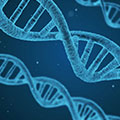Special Issue: Drosophila models of tumourigenesis
Guest Editor
Dr. Helena E. Richardson
Cell Cycle and Development Laboratory, Peter MacCallum Cancer Centre, East Melbourne, Victoria, Australia
Email: helena.richardson@petermac.org
Manuscript Topics
The genetically amenable vinegar fly, Drosophila melanogaster, has been an important model organism for over 100 years. It has made major contributions to the discipline of cell and developmental biology by the discovery of new genes and signaling pathways as well as providing seminal insights into gene function, which are relevant to human health. After the sequencing of the Drosophila and human genomes it has been realized that ——70% of human disease genes are conserved in Drosophila, and through years of research it has revealed that Drosophila is a great model of many human diseases including cancer. In this special edition, we highlight new insights that the Drosophila model has made towards understanding the contribution of various signaling pathway, polarity, actin cytoskeletal and epigenetic regulators to the hallmarks of cancer, as well as its use as a system for anticancer drug discovery.
Instruction for Authors
http://www.aimspress.com/aimsg/news/solo-detail/instructionsforauthors
Please submit your manuscript to online submission system
https://aimspress.jams.pub/








 Abstract
Abstract HTML
HTML PDF
PDF